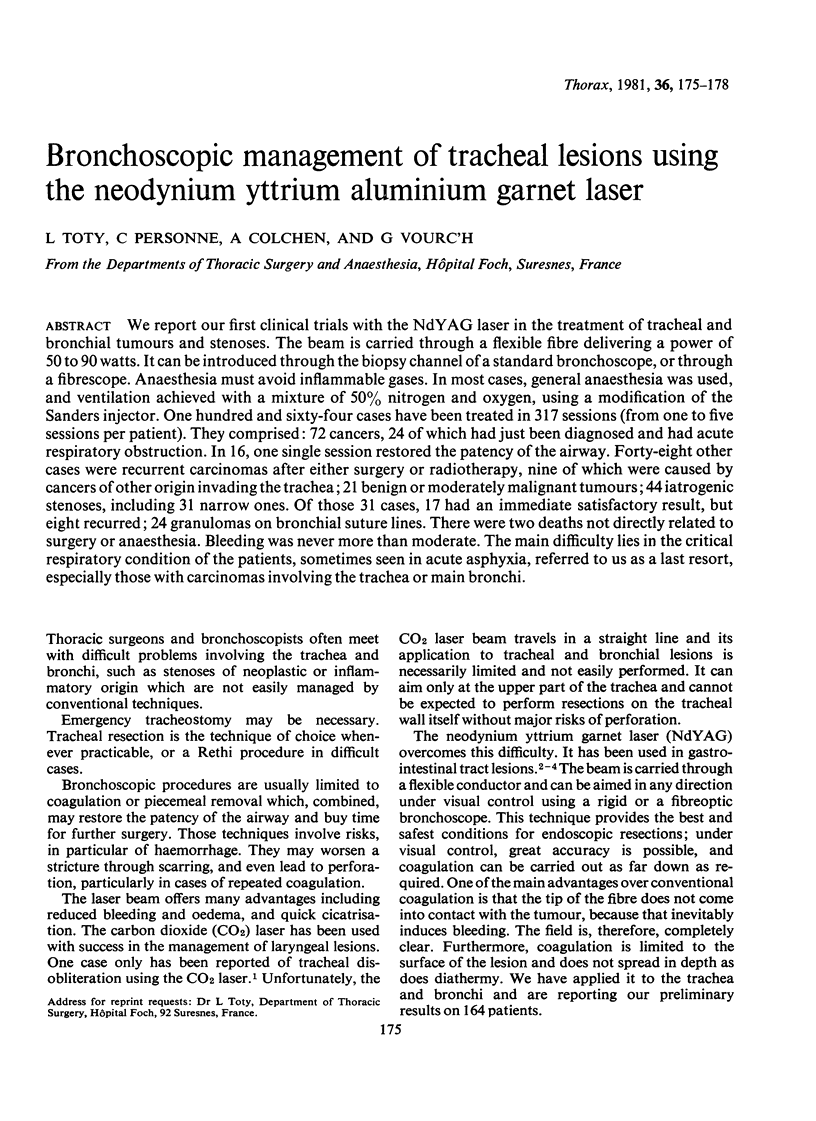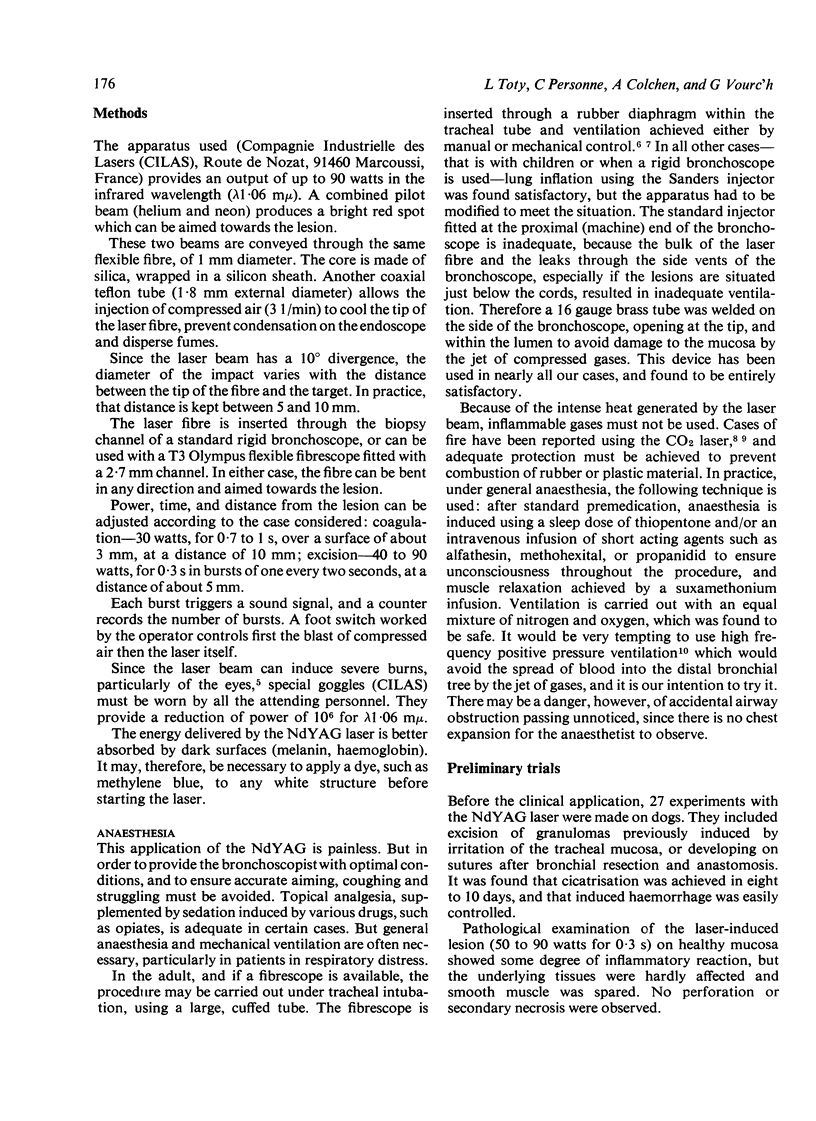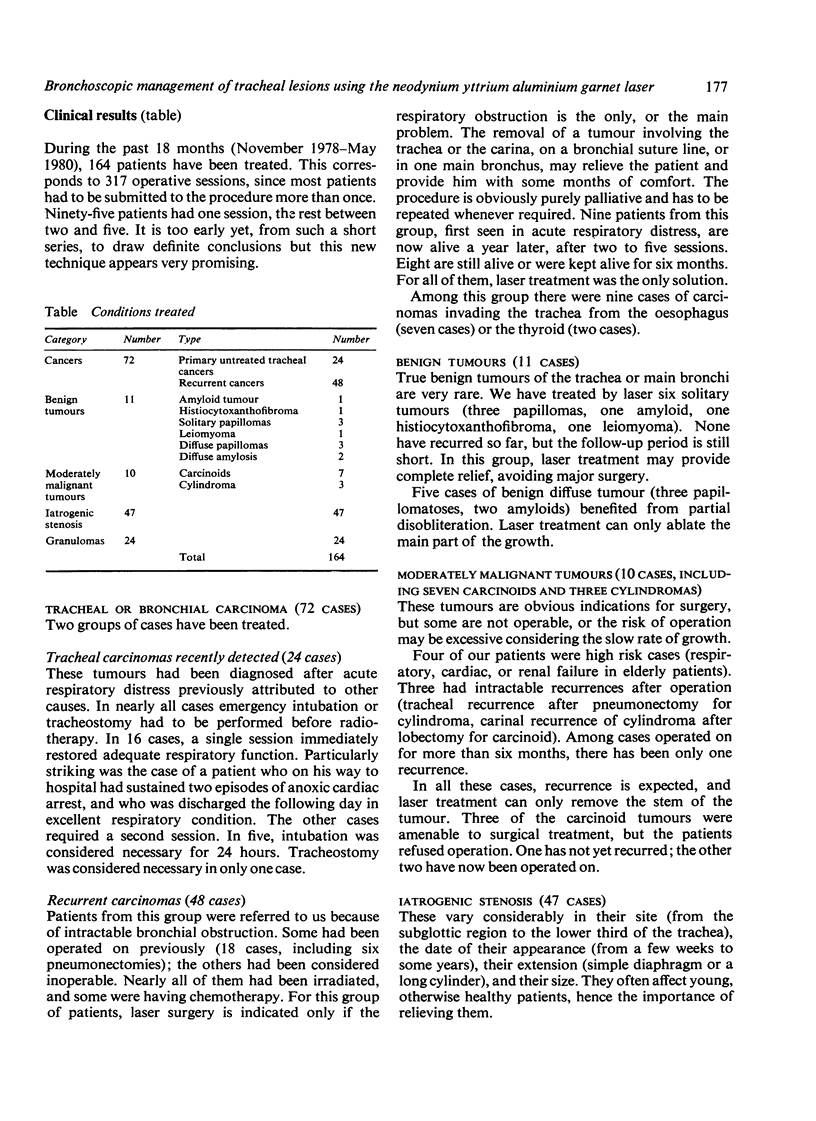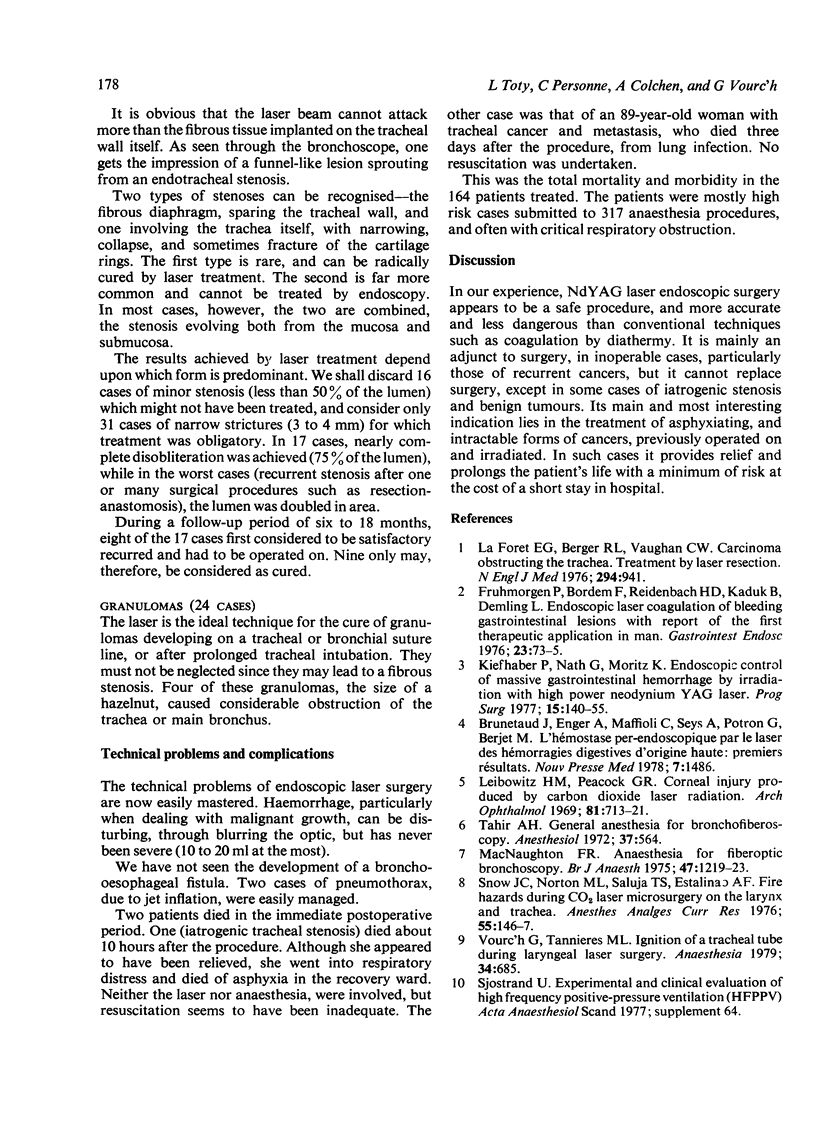Abstract
We report our first clinical trials with the NdYAG laser in the treatment of tracheal and bronchial tumours and stenoses. The beam is carried through a flexible fibre delivering a power of 50 to 90 watts. It can be introduced through the biopsy channel of a standard bronchoscope, or through a fibrescope. Anaesthesia must avoid inflammable gases. In most cases, general anaesthesia was used, and ventilation achieved with a mixture of 50% nitrogen and oxygen, using a modification of the Sanders injector. One hundred and sixty-four cases have been treated in 317 sessions (from one to five sessions per patient). They comprised: 72 cancers, 24 of which had just been diagnosed and had acute respiratory obstruction. In 16, one single session restored the patency of the airway. Forty-eight other cases were recurrent carcinomas after either surgery or radiotherapy, nine of which were caused by cancers of other origin invading the trachea; 21 benign or moderately malignant tumours; 44 iatrogenic stenoses, including 31 narrow ones. Of those 31 cases, 17 had an immediate satisfactory result, but eight recurred; 24 granulomas on bronchial suture lines. There were two deaths not directly related to surgery or anaesthesia. Bleeding was never more than moderate. The main difficulty lies in the critical respiratory condition of the patients, sometimes seen in acute asphyxia, referred to us as a last resort, especially those with carcinomas involving the trachea or main bronchi.
Full text
PDF



Selected References
These references are in PubMed. This may not be the complete list of references from this article.
- Brunetaud M. F., Enger A., Maffioli C., Seys G. A., Potron G., Berjot M. L'hémostase per-endoscopique par le laser des hémorragies digestives d'origine haute: premiers résultats. Nouv Presse Med. 1978 Apr 29;7(17):1486–1486. [PubMed] [Google Scholar]
- Frühmorgen P., Bodem F., Reidenbach H. D., Kaduk B., Demling L. Endoscopic laser coagulation of bleeding gastrointestinal lesions with report of the first therapeutic application in man. Gastrointest Endosc. 1976 Nov;23(2):73–75. doi: 10.1016/s0016-5107(76)73594-6. [DOI] [PubMed] [Google Scholar]
- Kiefhaber P., Nath G., Moritz K. Endoscopical control of massive gastrointestinal hemorrhage by irradiation with a high-power Neodymium-Yag laser. Prog Surg. 1977;15:140–155. doi: 10.1159/000399583. [DOI] [PubMed] [Google Scholar]
- Leibowitz PEACOCK G. R. Corneal injury produced by carbon dioxide laser radiation. Arch Ophthalmol. 1969 May;81(5):713–721. doi: 10.1001/archopht.1969.00990010715022. [DOI] [PubMed] [Google Scholar]
- Macnaughton F. I. Anaesthesia for fibreoptic bronchoscopy. Br J Anaesth. 1975 Nov;47(11):1219–1223. doi: 10.1093/bja/47.11.1219. [DOI] [PubMed] [Google Scholar]
- Snow J. C., Norton M. L., Saluja T. S., Estanislao A. F. Fire hazard during CO2 laser microsurgery on the larynx and trachea. Anesth Analg. 1976 Jan-Feb;55(1):146–147. doi: 10.1213/00000539-197601000-00039. [DOI] [PubMed] [Google Scholar]
- Tahir A. H. General anesthesia for bronchofiberscopy. Anesthesiology. 1972 Nov;37(5):564–566. [PubMed] [Google Scholar]
- Vourc'h G., Tannieres M., Freche G. Ignition of a tracheal tube during laryngeal laser surgery. Anaesthesia. 1979 Jul-Aug;34(7):685–685. doi: 10.1111/j.1365-2044.1979.tb06389.x. [DOI] [PubMed] [Google Scholar]


